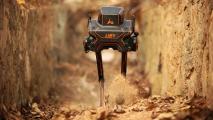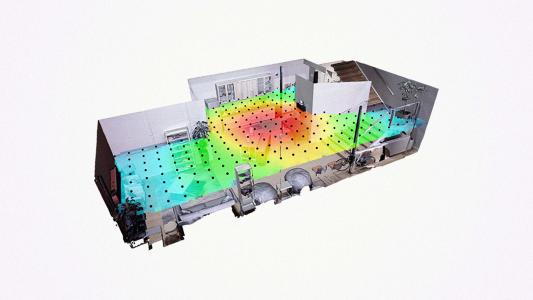Chameleons are highly specialized lizards who can move their eyes independently and change color. But it takes a steady gaze to see their most exciting feat: when the tongue fires out, grabs a tasty insect dinner, then coils back in — all in just a few microseconds. Now, this quick-tongued trick isn’t limited to chameleons: a team of engineers created a robot with a tongue-like grabbing device, and named it “Snatcher.”
Besides being a neat party trick, Snatcher could be useful in real-world scenarios, like picking up packages in hazardous situations or helping people with limited mobility.
How it Works
The engineers’ muse was a chameleon lizard, and their medium was a tape measure — yes, a typical measuring tape found at any hardware store. Due to its curved shape, a tape measure rapidly rolls up like a chameleon tongue.
The team from the Seoul National University of Science and Technology made the robot act like a chameleon lizard by designing a spring-like system operated by an active clutch and elastic actuator to create the lightning-fast tongue. A simple wind-up steel tapeline passes through geared feeders. The clutch guides the firing and retracting with a single spring by switching between forward and backward feeding gears.
Snatcher, the chameleon lizard robot, uses a hooked connection at the end of its tongue to grab and move objects.
This isn’t the first chameleon lizard inspired robot. In 2011, researchers created a robot that used a mini-cannon to shoot out a magnetic projectile, which retracted on a chord. But their robot required a magnetic target. Snatcher uses a hook to grab small objects, up to 30 grams, up to 80 centimeters away. The quick-tongued robot can snatch up its target in under 600 milliseconds. The entire tongue device fits nicely into the small robotic body, who’s overall size is 12 x 8.5 x 8.5 centimeters less than 120 grams.
Not Just a Cool Trick
The team envisions the robotic tongue might be mounted on drones to pick up packages someday, especially where the drone propellers might otherwise get in the way of accomplishing this task.
“For example, a quadrotor with this manipulator will be able to snatch distant targets, instead of hovering and picking up,” said Gwang-Pil Jung, co-designer of the device.
There are other practical uses, too. Because of its compact size, Snatcher could be a useful device for people with limited mobility and reach. The researchers say the prototype’s hook end would need to be upgraded to a grabbing tool that would close on contact, and maintain its grip while the tongue retracts. That simple change would improve its functionality.
Imagine, a quick-moving, chameleon lizard tonguebot could someday be your next sidekick.
We’d love to hear from you! If you have a comment about this article or if you have a tip for a future Freethink story, please email us at [email protected].





